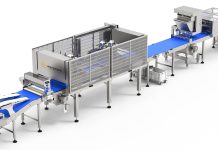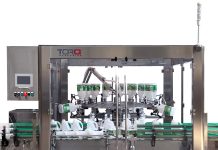Experimentation

The study aimed at collecting technical and scientific information in order to identify the most suitable bentonite among four types of bentonites, not commonly used in wine clarification – bentonites A and B (granular formulations) and bentonites C and D (powder formulations) – by studying the interaction between each bentonite and a common matrix, a young Valpolicella wine. Clays were used, after rehydration in a volume of water equal to twenty times their weight, as summarized in figure 1. Experimental tests were preceded by a preliminary evaluation, in order to determine the optimal amount of bentonite to be used by choosing it among the following levels: 15, 30 and 50 g/hL. The preliminary assessment has therefore provided the measurement of colloidal stability and phenolic compounds of the samples treated with bentonites at the indicated amounts. Once established the amount to be used in the experimental tests, the effects of bentonite have been measured again in terms of color index (color intensity and tonality), phenolic compounds (total polyphenols, anthocyanins and tannins), stability of the colloidal system (by tests at 30-40-50-60-70-80°C) and total protein concentration.
Results
The preliminary evaluation showed that the optimal amount to be used in testing was 50 g/hL. On the base of a rapid colloidal stability test results, at the amount level of 50 g/hL, the highest clarification occurs for all samples especially with powder bentonites. As for the removal of total phenols, the impact of bentonite does not appear to be quantitatively related to the amount. Thus, a 50 g/hL level enabled to reach the main objective, i.e. the stability of the colloidal system, without significantly affecting the content of total phenols. Experimental tests have shown that the treatment with bentonite results in a reduction in color intensity, even if the different types of bentonite have not been resulted in significant differences; on the contrary, as for tonality, the treatment has not caused any variation (table 1). Table 2 shows the results for the total polyphenols content: the bentonite treatment has not resulted in significant variations and bentonites, although different, have equivalent behaviors. As for the content of anthocyanins (table 3) and tannins (table 4), only bentonite D (powder) distinguished among the others, determining a significant removal of such compounds. On the contrary, the samples treated with the bentonites A, B, and C showed similar values which were overlapped to those of the untreated sample. To assess the stability of the colloidal system, different amounts of the same sample have been heated at 30, 40, 50, 60, 70 and 80°C. In figure 2, a comparison among the turbidity trend of the samples treated with bentonite and the turbidity of the untreated sample. At all temperatures, bentonite A ensures the maintenance of clarification, while D was the less efficient one. To assess the de-proteinization by clays, the percentage reduction has been calculated in comparison to the protein content of the control sample after the static sedimentation.

Figure 3 shows the percentage reduction data for each bentonite used. The treatment with bentonite has not been resulted in significant reductions in protein concentration, which reach the maximum value with bentonite A (9.5%). In conclusion, the experimental study showed a positive primary effect of the bentonite treatment, linked to an effective stabilization of the colloidal system and to a protein removal which was, in any case, less than 10%. This primary effect is combined with a secondary effect resulting in a slight interaction of the four bentonites with the phenolic matrix, in terms of anthocyanins, tannins, total polyphenols, and color indexes. The different behavior of bentonite A and of bentonite D regarded both the stability of the colloidal system and the other matrix factors involved in the colloidal and protein stability. Thus, it seems that red wine may benefit from a refinement of its colloidal profile by fining through bentonite, after an assessment of the optimal amount and type able of ensuring stability and preserving wine color and texture.
References
1. Langourieux S. and Crouzet J.C., (1997). Study of interaction between aroma compounds and glycopeptides by a model system. J. Agric. Food Chem., 45: 1873-1877
2. Ribéreau-Gayon P., Glories Y., Maujean A., and Dubourdieu D., (2006a). The concept of clarity and colloidal phenomena. In Handbook of Enology vol. 2. John Wiley & Sons Ltd, Paris, 285-296
3. Ferreira R.B., Monteiro S., Piçarra-Pereira M.A. and Teixeira A.R., (2004). Engineering grapevine for increased resistance to fungal pathogens without compromising wine stability. Trends in Biotechnology, 22, 168–173
4. Hsu J.C. and Heatherbell D.A., (1987a). Heat-unstable proteins in wine. Characterization and removal by bentonite fining and heat treatment. Am. J. Enol. Vitic., 38: 11-16
5. Lambri M., Dordoni R., Silva A. and De Faveri D.M., (2010). Effect of bentonite fining on odor-active compounds in two different white wine styles. Am. J. Enol. Vitic., 61: 2, 225-233
6. Hsu J.C. and Heatherbell D.A., (1987b). Isolation and characterization of soluble proteins in grapes, grape juice and wine. Am. J. Enol. Vitic., 38: 6-10
7. Marquette B. (2006)., Interazioni tannini-proteine: dinamiche ed influenza sul profilo tannico e sulla morbidezza dei vini rossi. Laffort Œnologie, 49, 1-4
8. Würdig G. and Woller R., (1989). Chemie des Weines. Stuttgart, Eugen Ulmer: 926
by Roberta Dordoni , Roberta Galasi, Milena Lambri – Institute of Oenology and Agro-Food Engineering, Faculty of Agriculture, Università Cattolica del Sacro Cuore, Piacenza




